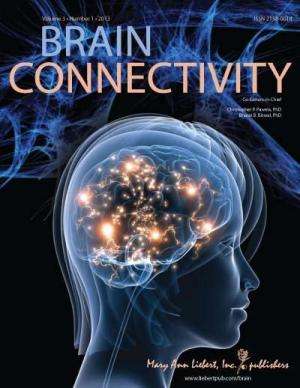©2013 Mary Ann Liebert, Inc
A new study of patterns of brain communication in toddlers with autism shows evidence of aberrant neural communication even at this relatively early stage of brain development. The results are presented in an article in Brain Connectivity.
A team of researchers from The Netherlands (University Medical Center Utrecht and Utrecht University, Radboud University Nijmegen Medical Center, and VU University Medical Center, Amsterdam) compared electroencephalography (EEG) recordings from young children with and without autism. The researchers evaluated the patterns of communication between various functional neural networks in the brain that aid in the processing and integration of information.
In the article "Disrupted Functional Brain Networks in Autistic Toddlers," Maria Boersma et al. describe significant differences in the communication patterns, in particular in variables such as path length and clustering.
"This work provides support to the hypothesis that autism is a disorder of connectivity," says Christopher Pawela, PhD, Co-Editor-in-Chief and Assistant Professor, Medical College of Wisconsin. "The researchers demonstrated that autistic children's brains have both reduced brain connectivity and a diminished capacity for neural communication. This is an interesting finding and has impact on the understanding of the abnormal brain development in autistic children."
More information: The article is available free on the Brain Connectivity website at http://www.liebertpub.com/brain.
Provided by Mary Ann Liebert, Inc



















